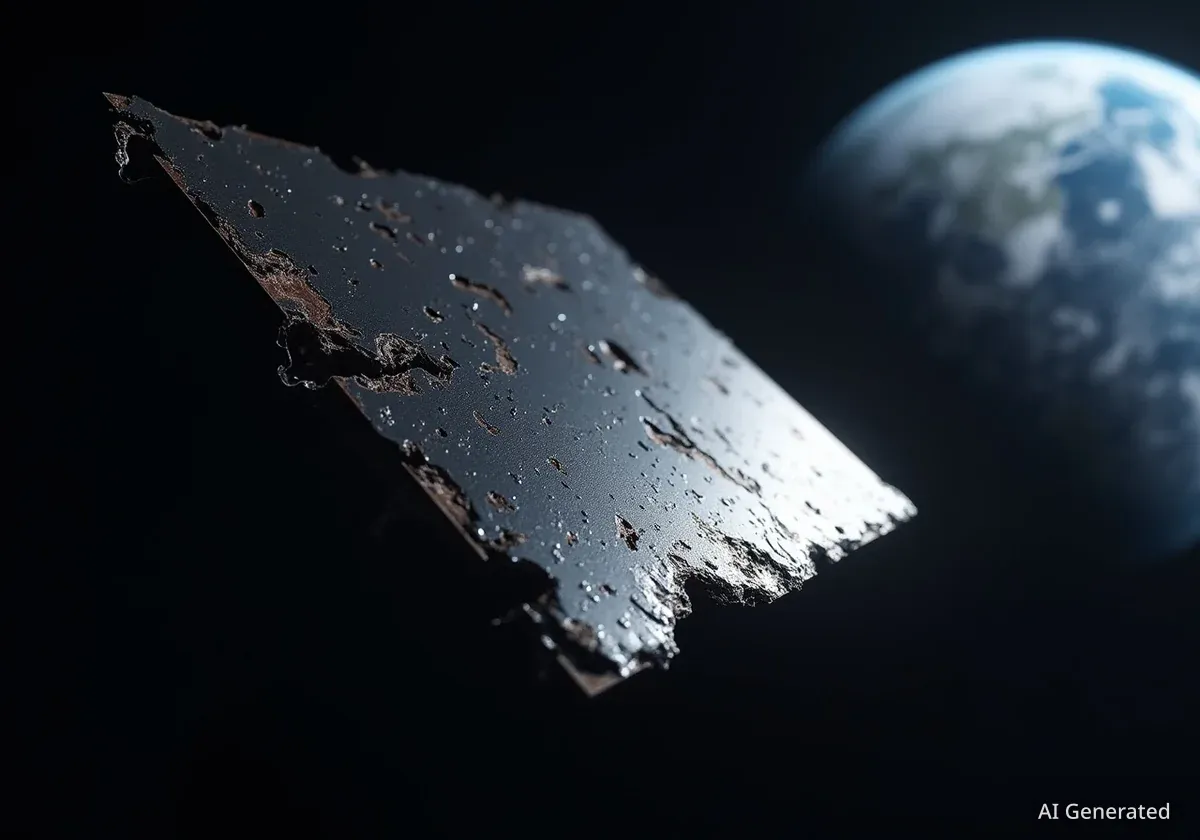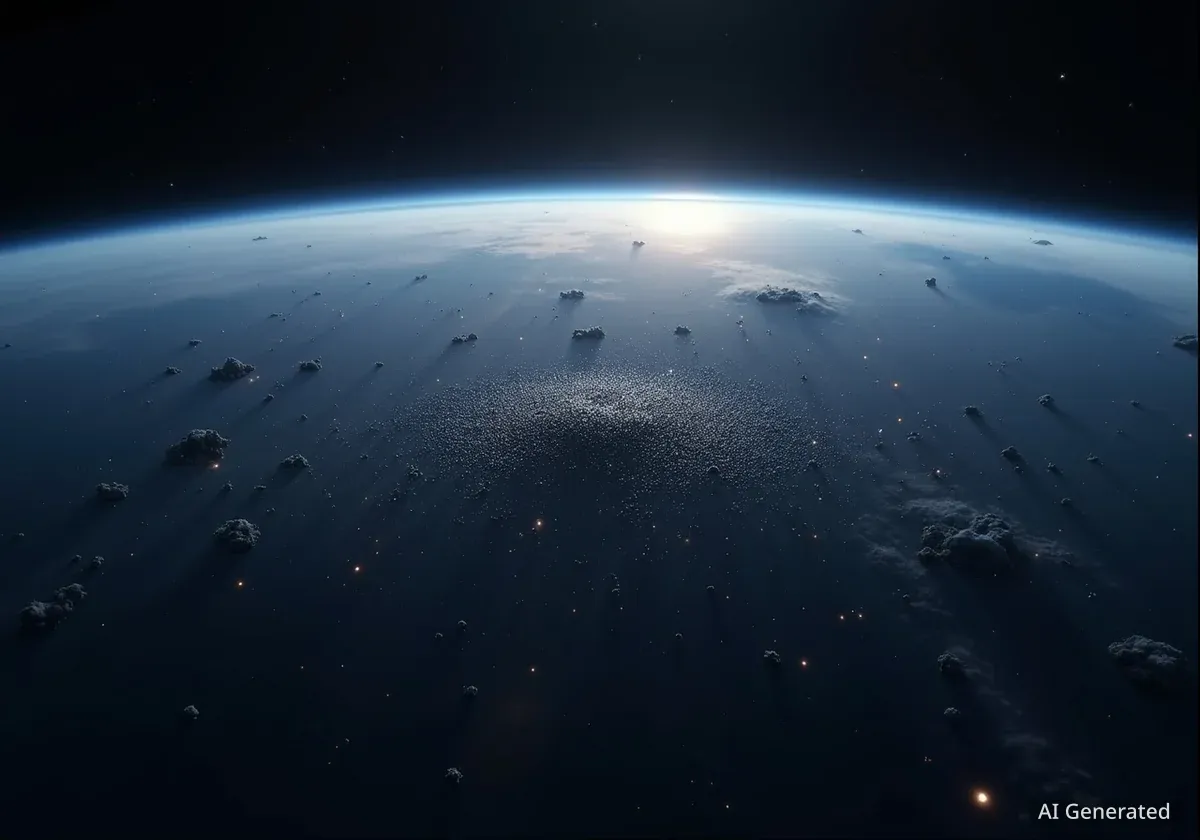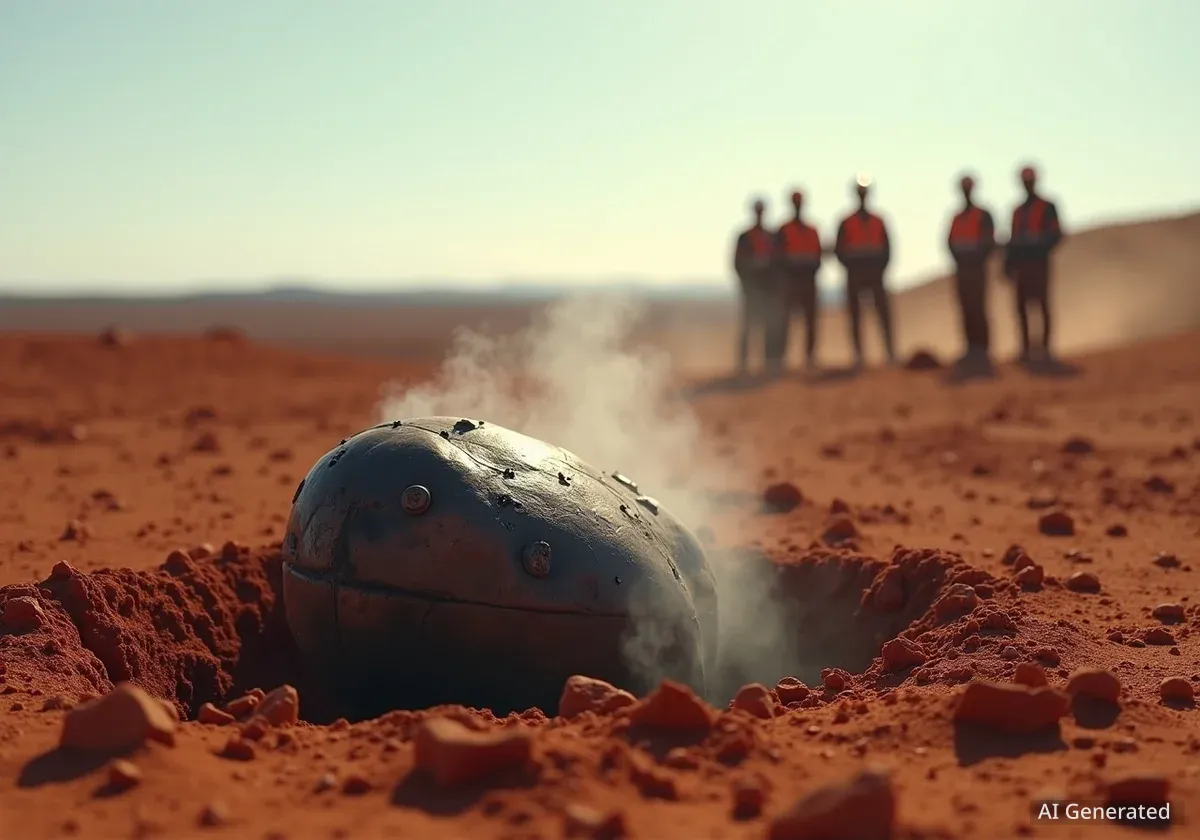The region surrounding Earth is becoming increasingly cluttered with human-made debris, commonly known as space junk. This material, ranging from defunct satellites to tiny paint chips, travels at extremely high speeds and presents a significant collision risk to active spacecraft, including the International Space Station and vital communication satellites.
Key Takeaways
- Orbital debris consists of non-functional objects left by humans in space, from large rocket stages to microscopic fragments.
- Objects in orbit can travel at speeds up to 29,000 kilometers per hour (18,000 mph), making even small pieces dangerous.
- There are over 36,500 pieces of debris larger than 10 centimeters currently tracked, with millions of smaller, untrackable fragments.
- Collisions create more debris, leading to a cascading effect that increases the overall risk to space infrastructure.
Defining the Problem of Space Junk
Orbital debris, or space junk, refers to any man-made object in orbit around Earth that no longer serves a useful purpose. This category includes a wide variety of items that have accumulated since the beginning of space exploration in the late 1950s. The sources of this debris are diverse and have grown over the decades.
Major contributors to the debris population include:
- Defunct Satellites: Spacecraft that have reached the end of their operational lives and have been abandoned in orbit.
- Discarded Rocket Stages: Upper stages of launch vehicles that are left to drift after deploying their payloads.
- Collision Fragments: Pieces created when two objects, such as satellites, collide in orbit.
- Mission-Related Items: Objects lost during activities like spacewalks, including tools, cameras, and even a glove lost by astronaut Ed White in 1965.
While larger objects are easier to track, the vast majority of space junk consists of smaller fragments. These can result from the gradual breakdown of spacecraft materials due to the harsh space environment or from high-velocity impacts.
A Landmark Collision Event
A significant event that highlighted the severity of the debris problem occurred in 2009. A defunct Russian military satellite, Kosmos-2251, and an operational U.S. communications satellite, Iridium 33, collided nearly 800 kilometers above Siberia. This single incident generated thousands of new, trackable pieces of debris and countless smaller fragments, substantially increasing the risk in that orbital region.
The Dangers of High-Speed Debris
The primary danger of space junk is not its size, but its incredible speed. Objects in low Earth orbit travel at velocities approaching 8 kilometers per second (5 miles per second). This is equivalent to approximately 29,000 kilometers per hour (18,000 mph), a speed at which a small object carries a significant amount of kinetic energy.
At these velocities, a collision with even a tiny fragment can have catastrophic consequences. A paint fleck could chip a window on the International Space Station, while a slightly larger piece, just a few centimeters across, could penetrate the hull of a spacecraft or disable a critical satellite system.
Debris by the Numbers
According to data from space surveillance networks, there are more than 36,500 pieces of space junk larger than 10 centimeters (4 inches) in orbit. The number of fragments between 1 and 10 centimeters is estimated to be over a million, while particles smaller than 1 centimeter could number in the hundreds of millions.
This constant threat forces operators of valuable assets, like the International Space Station (ISS), to take protective measures. In 2021, the seven astronauts aboard the ISS were instructed to shelter in their respective spacecraft as a precautionary measure when the station passed through a dense debris field. Such avoidance maneuvers are becoming increasingly common.
Tracking and Long-Term Persistence
Government agencies and military organizations, such as NASA and the U.S. Space Force, use a global network of sensors to track larger pieces of debris. This allows them to predict potential collisions and warn satellite operators or the ISS crew to perform avoidance maneuvers. However, tracking millions of smaller fragments is not currently feasible.
The persistence of this debris is another major challenge. The time it takes for an object to naturally de-orbit depends heavily on its altitude.
- Low Altitude (below 600 km): Debris in this region may re-enter Earth's atmosphere within a few years due to atmospheric drag.
- High Altitude (above 800 km): Objects can remain in orbit for decades, centuries, or even millennia.
When debris does re-enter the atmosphere, smaller pieces typically burn up completely due to the intense heat generated by friction. However, larger, more robust objects can survive re-entry and impact the Earth's surface. While most of these land in the ocean or unpopulated areas, there have been notable incidents.
"The crash created thousands of new pieces of space junk." - This refers to the 2009 Iridium-Kosmos collision, a stark example of how one event can pollute an entire orbital band.
One famous example is the de-orbit of Skylab, the first U.S. space station. In July 1979, large chunks of the abandoned station survived re-entry and scattered over Western Australia and the Indian Ocean. In a symbolic gesture, Australian officials issued NASA a $400 fine for littering.
Future Challenges and Potential Solutions
The problem of orbital debris is expected to worsen. The rise of large satellite constellations, often called mega-constellations, will place thousands of new satellites into low Earth orbit. While these networks offer benefits like global internet coverage, they also significantly increase the density of objects in space, raising the probability of future collisions.
This has led to growing concerns about a theoretical scenario known as the Kessler Syndrome. Proposed by NASA scientist Donald J. Kessler in 1978, this theory suggests that if the density of objects in low Earth orbit becomes high enough, a single collision could trigger a chain reaction. Each collision would create more debris, which in turn would increase the likelihood of further collisions, potentially rendering certain orbits unusable for generations.
To address this growing threat, space agencies and private companies are exploring various methods for active debris removal. These concepts include:
- Nets and Harpoons: Capturing larger pieces of debris and dragging them into a lower orbit to burn up.
- Tethers and Sails: Attaching devices to old satellites to increase their atmospheric drag and speed up their orbital decay.
- Ground-Based Lasers: Using powerful lasers to slightly alter the trajectory of small debris pieces, causing them to re-enter the atmosphere sooner.
International cooperation and updated space regulations are also crucial. Establishing clear guidelines for satellite design, end-of-life disposal, and collision avoidance protocols is essential to ensuring the long-term sustainability of space activities for all nations.





